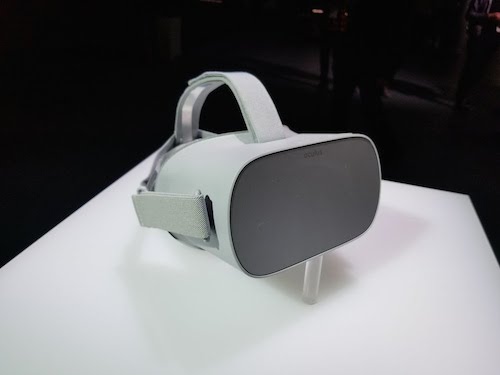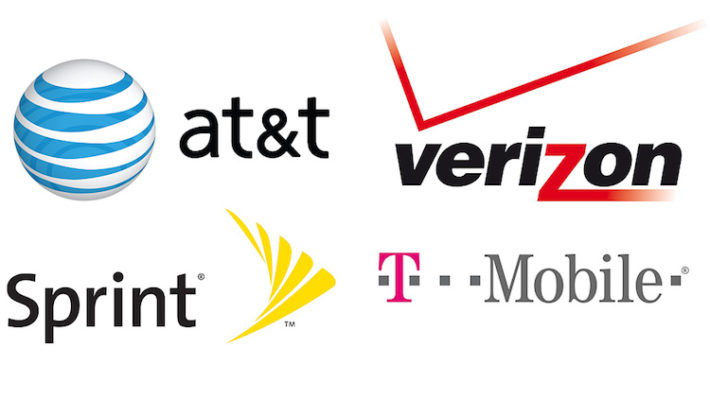Facebook hosted a pop-up space in SoHo, New York, Friday to demo its new Oculus Go headset to the public. The device is a standalone VR headset, meaning it doesn’t require a smartphone or to be plugged into a computer to work.
I dropped by the pop-up just before closing to give it a try, but I definitely should have gone earlier. After completing one level of the “Coaster Combat” VR game I was ready to cancel my plans and sit back to defeat skeletons launching deadly orbs at me as I chugged along a rickety roller coaster track. Needless to say I had fun. I also viewed the “It: Float” cinematic experience and another trailer for an educational experience called “The Body VR.”
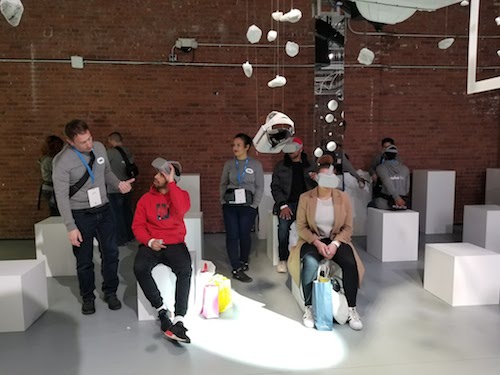
Oculus Go
The pop up was free to the public and there were several headsets available for guests to try. Patrons were also able to purchase the Oculus Go on location. The 32GB base model sells for $199.99, while the 64GB model sells for $249.99.
Unlike many other VR headsets, the Oculus Go does not require headphones for sound. The sound is personal to the user, but they can still hear what’s going on around them, which in this venue included music and several dozen talking people.
Sound for the “Coaster Combat” game and “The Body VR” demos were easy to follow despite the surrounding noise. The “It” trailer had more speaking and was difficult to follow; however, Pennywise’s laughs were as creepy as ever. The Oculus Go includes a 3.5mm headphone jack, in case users want a more isolated sound experience.
Overall, the headset is light and fairly immersive, though users can easily look down to be aware of what’s going on around them. Once I got a hand of the controller, the gameplay was extremely fun.
Visting the Oculus Go pop-up shop reminded me of the VR World arcade located on 34th Street in New York City. That space is a one-stop shop for patrons to experience several different types of VR hardware, including the Samsung Gear VR, the HTC Vive, and the original Oculus Rift, the brand’s high-end, wired headset. VR World brings an old school arcade vibe to exploring high-end virtual reality and patrons are only responsible for the price of admission.
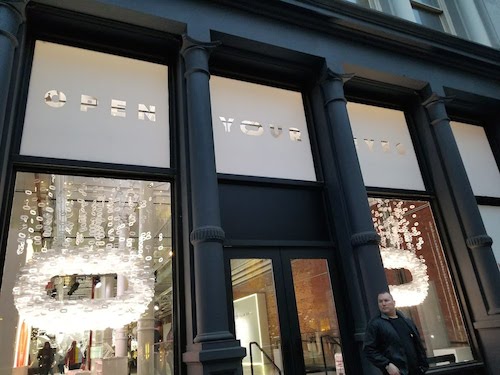
Oculus Go
Passersby in SoHo were able to drop in for free and learn more about VR at the Oculus Go pop-up, but they also had the option to buy a headset. There is no word on whether Facebook will host other pop-up spaces in New York or other locations. Still, considering the precedent, public speciality spaces could become an interesting way for VR companies to spread the word about their products and educate consumers about the different types of VR hardware available.
Many companies are beginning to experiment with standalone headsets to solve the pain point of having VR headsets be too pricey and complicated for consumers to purchase for their homes. However, the standalone VR category is still very much in an experimental level.
Google and Lenovo partnered to launch the Mirage Solo, which not only removes the need for a smartphone or computer, but also increases immersiveness with six degrees of freedom (6DoF). This allows users more ease to move around naturally in a virtual reality headset and the ability to complete outside tasks without having to come out of a VR experience. However, the Mirage Solo sells for $399.99, the same as the wired Oculus Rift VR Headset.
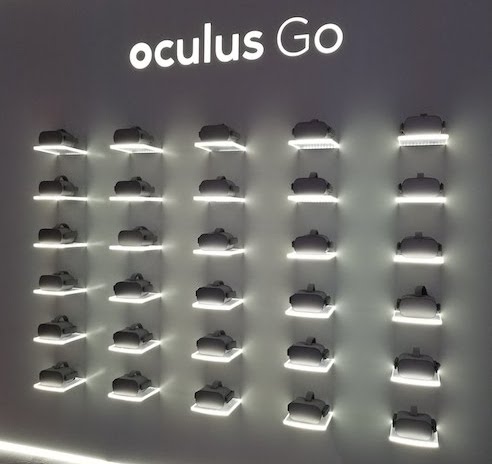
Oculus Go
The Oculus Go is slightly less technologically advanced with three degrees of freedom (3DoF), but that allows for a cheaper price tag. Consumers still get the benefit of not having to worry that their smartphone that is not compatible with the headset. The Oculus Go on-board screen also solves the issue of having content be distorted due to an ill-placed smartphone.

